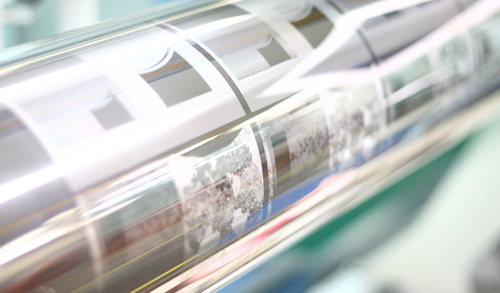
Resiliency, Vibrancy Are Advantages of Reverse Rotogravure Printed Flexible Packaging
 Words like “depression” and “recession” in today’s world tend to cause long sighs and stooped shoulders. But when they are used to describe the photomechanical intaglio process of etching a copper printing cylinder with a desired graphic, the result is a crisp, vibrant rotogravure printed image that causes customers to sit up and take notice.
Words like “depression” and “recession” in today’s world tend to cause long sighs and stooped shoulders. But when they are used to describe the photomechanical intaglio process of etching a copper printing cylinder with a desired graphic, the result is a crisp, vibrant rotogravure printed image that causes customers to sit up and take notice.
Compare rotogravure printing to traditional relief printing (when an image is raised from the surface of the printing plate), and packaging experts immediately detect that when the depressions, or intaglio areas, are filled with ink, the dynamic tonal gradations are virtually limitless as one varies the depths of these depressions. Not surprisingly, the rotogravure process was originally developed to reproduce fine art prints, a nod to the predecessors of today’s luminous flexible packaging designers.
Leader Flexible Packaging is an excellent printer in China that go one step beyond high quality rotogravure reproduction to up to 10-color reverse rotogravure printing. The same vibrancy is reproduced from a printing cylinder in reverse – a mirror image – onto transparent film that is subsequently laminated right-side up onto two to four additional layers of functional film.


In today’s competitive packaging culture, reverse rotogravure printing is the most sought after print process for numerous reasons. The ink is trapped between two layers of film so the integrity of the image is protected from scrapes, scratches and fading. The engaging images are simply works of art in themselves, and customers have the ability to specify any and all necessary film functions (air and moisture barriers, physical resiliency, UV protection, and more) at the lowest possible cost-to-performance ratio.




